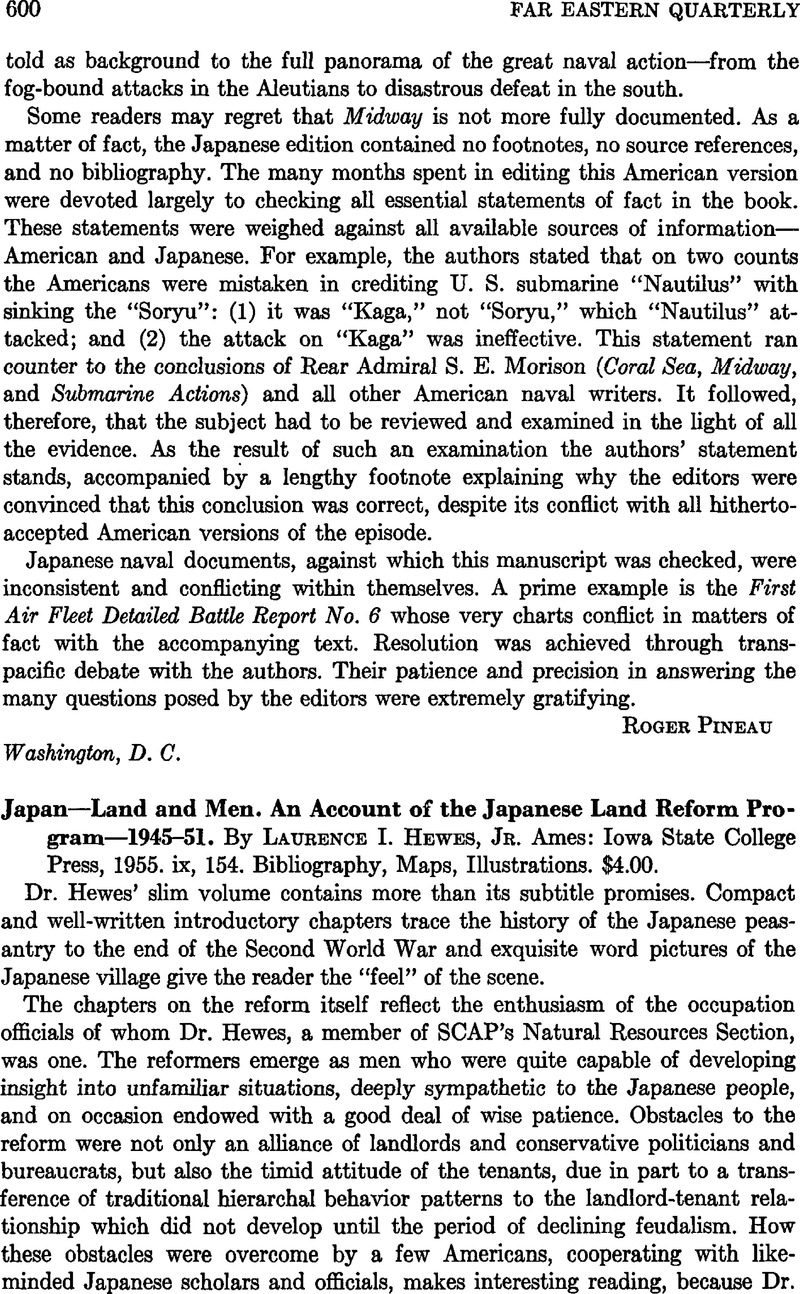No CrossRef data available.
Published online by Cambridge University Press: 23 March 2011

1 As the book shows, some Japanese officials shared the zeal of the Americans, while others stood in opposition to them. This points up the doubtful validity of generalizations regarding the Japanese reaction (or even regarding the reaction of the Japanese officialdom) to this and other reforms.
2 For instance, in ascribing the attitude of the officials of the Finance Ministry to their belief that they “outranked” others (p. 113), the author fails to consider that a financially pinched treasury usually attempts to curtail the demands on the budget, originating from the various governmental agencies. Not all problems of the occupation reformers stemmed from a clash with traditional values (such as hierarchy); sometimes they were simply problems of twentieth-century government. In the same connection, it can hardly be said that the Japanese government was not used to the role of a fiscal disbursing agent. It acts frequently in this role, and in doing so controls the local entities to a significant degree. But it likes to call the tune when it pays the piper—and it did not like the tune played by the land commissions.
3 The historical connection between the farmers' unions and the socialist movement is not mentioned (see, e.g., p. 34). However, the peculiar relations of the militarists and the peasantry are well described.